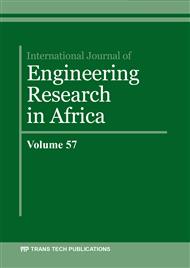[1]
Alekseis Lobasov, SergeyV.Alekseenko, Dmitriy M.Markovich, Mass and momentum transport in the near field of swirling turbulent jets. Effect of swirl rate, International Journal of Heat and Fluid Flow 83 (2020) 108539 doi.org/10.1016/j.ijheatfluidflow.2020.108539.
DOI: 10.1016/j.ijheatfluidflow.2020.108539
Google Scholar
[2]
Song Chen, Dan Zhao, Numerical study of non-reacting flow fields of a swirling trapped vortex ramjet combustor, Aerospace Science and Technology. 74 (2018) 81-92 doi.org/10.1016/j.ast.2018.01.006.
DOI: 10.1016/j.ast.2018.01.006
Google Scholar
[3]
Yang Zhang, Maarten Vanierschot, Modeling capabilities of unsteady RANS for the simulation of turbulent swirling flow in annular bluff-body combustor geometry, Applied Mathematical Modeling. 89 (2021)1140-1154 doi.org/10.1016/j.apm.2020.07.037.
DOI: 10.1016/j.apm.2020.07.037
Google Scholar
[4]
A. V. Brito Lopes, N. Emekwuru, B. Bonello and E. Abtahizadeh, On the highly swirling flow through a confined bluff-body, Phys. Fluids. 32 (2020) 055105 doi.org/10.1063/1.5141531.
DOI: 10.1063/1.5141531
Google Scholar
[5]
Junhua Zhang, BinHu, Aibing Fang, Zhonghao Wang, Qingjun Zhao, Analysis of coherent structures in partly confined swirling flows Aerospace Science and Technology 107 (2020) 106280, doi.org/10.1016/j.ast.2020.106280.
DOI: 10.1016/j.ast.2020.106280
Google Scholar
[6]
Y. Wu, C. Carlsson, R. Szasz, L. Peng, L. Fuchs, X.S. Bai, Effect of geometrical contraction on vortex breakdown of swirling turbulent flow in a model combustor, Fuel, 170 (2016) 210–225, doi.org/10.1016/j.fuel.2015.12.035.
DOI: 10.1016/j.fuel.2015.12.035
Google Scholar
[7]
A.C. Benim and A. Nahavandi, , K.J. Syed, URANS and LES analysis of turbulent swirling flows, Progress in Computational Fluid Dynamics, Vol.5 (2005) No.8, pp.444-454 doi 10.1504/PCFD.2005.007680.
DOI: 10.1504/pcfd.2005.007680
Google Scholar
[8]
Paolo Gobbato, Massimo Masi, Alessandro Cappelletti, Marco Antonello, Effect of the Reynolds number and the basic design parameters on the isothermal flow field of low swirl combustors, Experimental Thermal and Fluid Science 84 (2017) 242–250, doi.org/10.1016/j.expthermflusci.2017.02.001.
DOI: 10.1016/j.expthermflusci.2017.02.001
Google Scholar
[9]
Y M. Al-Abdeli and A R. Masri, Recirculation and flow field regimes of unconfined non reacting swirling flows, Experimental Thermal and Fluid Science, 27(2003), 655–665.
DOI: 10.1016/s0894-1777(02)00280-7
Google Scholar
[10]
M. Vanierschota and E. Van den Bulck, Influence of swirl on the initial merging zone of a turbulent annular jet, Phys. Fluids 20 (2008) 105104 doi 10.1063/1.2992191.
DOI: 10.1063/1.2992191
Google Scholar
[11]
ANSYS Fluent v. 13., Theory Guide: Release 13.0, http://www.ansys.com.
Google Scholar
[12]
ANSYS Gambit 2.4,6 http://www.ansys.com.
Google Scholar
[13]
B. E.Launder, G. J.Reece, W.Rodi, Progress in the Development of a Reynolds-Stress Turbulent Closure, Journal of Fluid Mechanics. 68 (1975) 537-566. doi.org/10.1017/S0022112075001814.
DOI: 10.1017/s0022112075001814
Google Scholar
[14]
F.R. Menter, Two-Equation Eddy-Viscosity Turbulence Models for Engineering Applications, AIA A Journal, Vol. 32, No. 8, 1994 doi.org/10.2514/3.12149.
Google Scholar
[15]
A.R. Masri. Available from http://web.aeromech.usyd.edu.au/thermofluids/swirl.php.
Google Scholar


